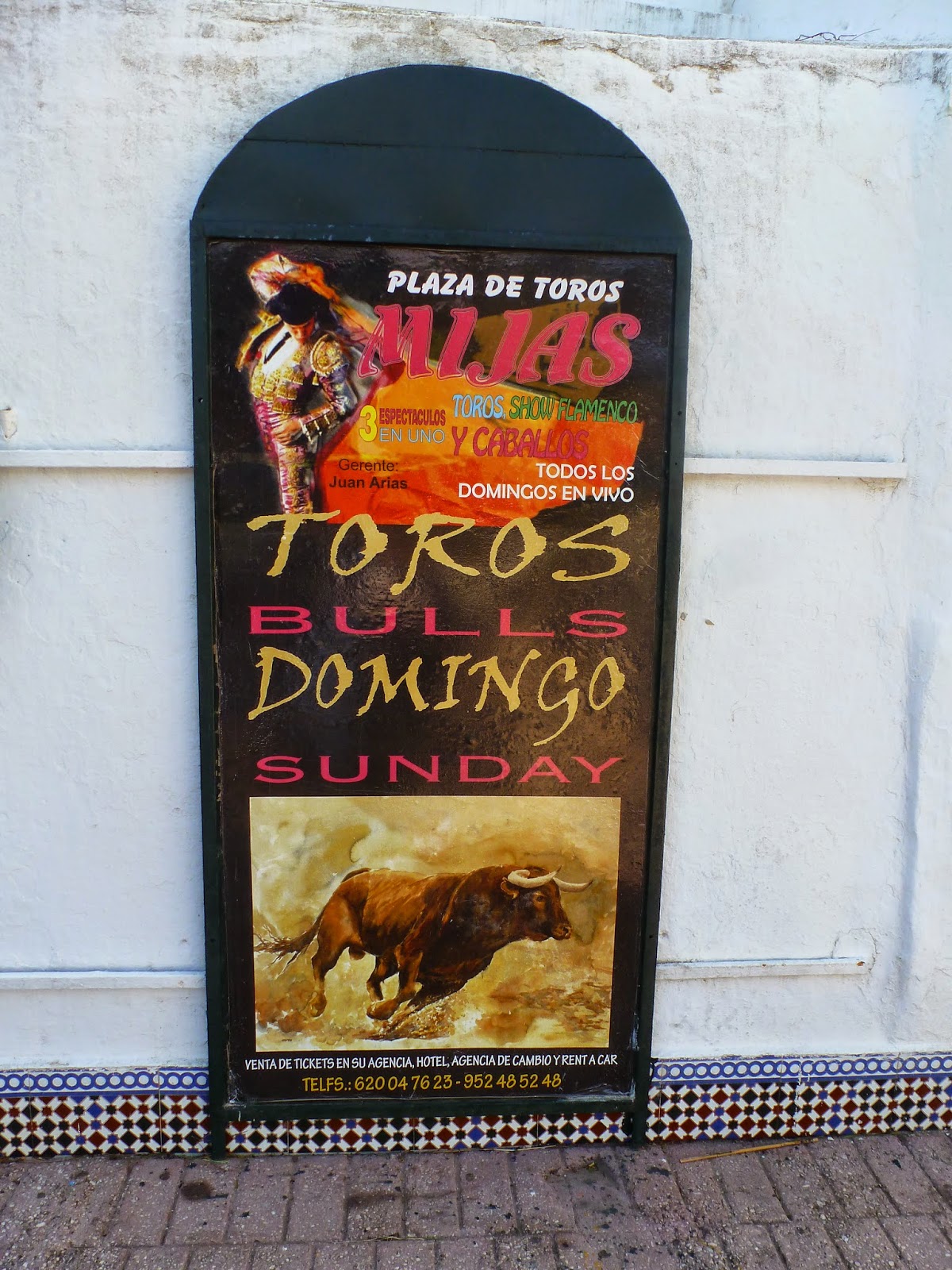I am laughing...
yah, yah, yah... you know I simply had to use that phrase as a
title sometime on this blog, don't you? I was in Spain after all –
it was inevitable, if predictable.
Whatever you may
think of bullfighting (and I shall not engage in a debate with you on
it) you must, at the least, recognize the beauty, passion, drama,
bravery and skill of its torero's.
Side note:
Torero is the Spanish word describing any of the performers who
participate in the bullfight. In English the torero is called the
toreador. Interestingly, this term does not exist in Spanish
but it is invented by Georges Bizet for his opera Carmen. Evidently
he needed the syllables of the word to match the cadence of the song
(thank you Wikipedia for this fact). The main performer, who is the
leader of the entourage and the one who kills the bull is addressed
as maestro (master), the formal title is matador de toros
(killer of bulls).
While travelling
in Spain you cannot avoid the reality of this historic and cultural
sport. Each city and many small towns have their own bull rings and
you encounter symbols, statues, posters and monuments to it and its
famous matadors all over the country. Antonio described how there
are even temporary bull rings that travel over the country for local
bullfights.
Black Bull silhouette billboards are peppered along the ditches all over Spain's highway
system. Antonio explained their history...
The origins of
these symbols of Spain only date back to the 1950s when they –
along with large billboards of red and black bottles – were erected
as advertisements for sherry by the Tio Pepe company. In 1994
the government banned roadside billboards – a good decision since
the countryside of Spain is so incredibly beautiful and who wants the
gorgeous views blocked by ads? However, there was such a cry and
local protests regarding these two particular images. Consequently
they alone were allowed to remain, although they could no longer make
any reference to the company or products for sale.
These billboards
have now turned into a symbol of Spain itself, the Black Bulls in
particular representing Spain's very culture and vitality. For some
Spaniards they represent “fertility” and legend has it that
barren couples make love in the shadow of its giant cojones
(testicles) to help in conception.
Following are
photos of some statues, posters, and exterior shots of a variety of
different bullrings from a variety of different locations – Madrid,
Malaga, Ronda (oldest in Spain, I think), Mijas.

















No comments:
Post a Comment
Please leave a comment but please always remain respectful. Thank you. The management. :)